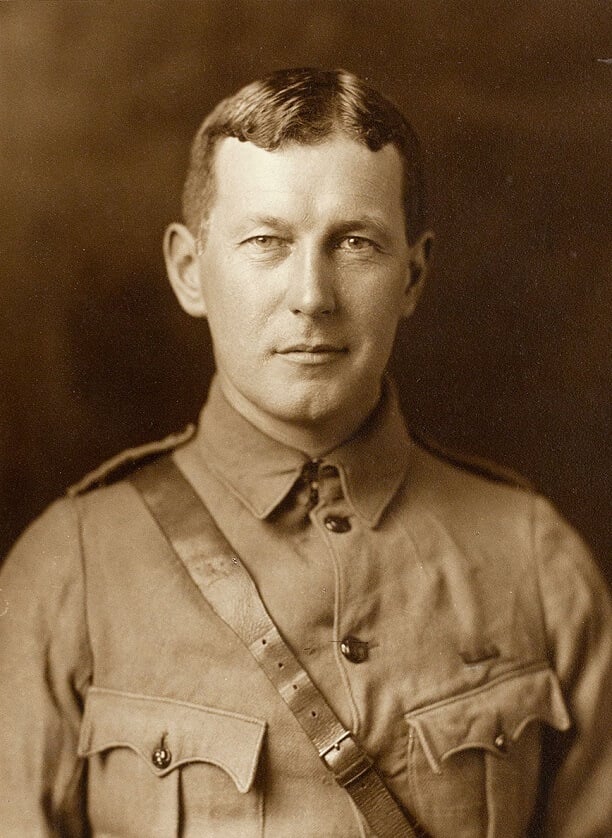
Remembering 1942 - Australia at War
Image: Diggers at Kokoda
1942 will hold forever a place in Australia’s history. For the first and last time since colonisation, the country came under direct attack from a foreign military power. Australia at War remembers that history and shares the memory of those who served.
The rapid advance of Japan’s military across the Asia-Pacific in 1941-1942 changed the way Australians viewed the Second World War.
The war against Germany and its Axis partners was focused far from Australia, and Australia’s military was fighting in much the same places it had fought in the First World War. The war was “over there”. In February 1942 it was clear the war had reached Australia’s doorstep.
The first in the Australia at War series is the Fall of Singapore on 15 February. This single defeat at the hands of the Imperial Japanese Army ended Australian belief that Britain would or could provide the necessary military support needed to defend Australia. Prime Minister John Curtin turned to the United States of America and an alliance that stands to this day was born.
The fall of Singapore also marked one of the darkest episodes of the Second World War. Some 130,000 troops, including 15,000 Australians, were surrendered. By year’s end 22,000 Australians were in Japanese prisons. More than one third would die, either from starvation and disease, or at the brutal hands of their captors. By contrast, of the 8,600 Australian POWs in other parts of the world, 8,335 survived to return home. Australia at War remembers the hardships of all POWs.
In terms of the Japanese treatment of prisoners, the series singles out the event that more than any other represents the inhumanity of the captors and the courage, mateship and resourcefulness of the POWs themselves. The infamous Thai-Burma Railway. Of the 13,000 Australian POWs forced to work on the railway more than 2,700 died. More would certainly have been lost if not for the ingenuity and courage of Australian medical officers who saved many in makeshift operating theatres.
Within Days of Singapore’s fall bombs fell on Australia. On 19 February Japan launched more planes against Darwin, in the Northern Territory, than it did against Pearl Harbor. Australia at War looks at the air raids and the assaults by Japan’s Navy as part of Japan’s direct assault on Australia. The air raids continued till November 1943 and Japan’s submarines wreaked havoc on Allied shipping in and around Australian waters till 1944. The Audacious attack by IJN midget submarines on Sydney Harbour in May 1942, and shelling of Sydney and Newcastle weeks later, rattled Australia and lifted fears of invasion.
Australia at War recounts the battle on the Kokoda Track as part of the defence of Port Moresby. Kokoda was the final blow to Japan’s hopes of establishing a foothold directly opposite Australia’s north east coast. A seaborne invasion force was turned back in early May by Australian and U.S. naval forces – at the battle of Coral Sea and by the Australian-led blockade at the Jomard Passage on the southeastern tip of New Guinea. The Royal Australia Navy’s war changed dramatically in 1942. Most of the fleet quickly returned from the northern hemisphere to battle the Imperial Japanese Navy. Of five major R.A.N. ships sunk in 1942, four were lost to the Pacific War, including HMAS Canberra, which remains to this day Australia’s biggest warship lost in combat.
The quest for Port Moresby also saw Japan attempt to capture a newly established Allied air base at Milne Bay in August. The base would have provided much needed resupply and air support for the IJA forces at Kokoda. But the invasion force of IJN marines was defeated by Australian infantry, Royal Australian Air Force P40 Kittyhawkes and U.S. Engineers. Australia at War remembers was the first time an amphibious Japanese assault had been defeated. Milne Bay showed all that the seemingly invincible Japanese could indeed be defeated.
While the US and Australia battled Japan in the Pacific, the Australia at War series also remembers Australia’s support for the war effort in Europe and North Africa.
Over Europe R.A.A.F. aircrews swelled the ranks of Bomber Command. More so than any other area of service, Bomber command took a disproportionate toll on Australia. Of the almost one million Australians who served in the war, only some 10,000 served in Bomber Command. Yet Bomber Command accounted for more than one in ten of all Australians lost to the war.
In the desert campaign Australian forces played a significant role in the defeat of Rommel in North Africa in the final Battle of El Alamein. This victory against the “Desert Fox” and the denial of German aspirations in North Africa was recounted by Britain’s wartime Prime Minister Winston Churchill thus; “Before Alamein we never had a victory. After Alamein we never had a defeat.”
Australia at War will help all Australians honour the memory of those who served in the war, both those who were lost and those who survived.
The Australia at War series will be available online from mid-March.













